First aid is also necessary for dogs in the event of an accident. An accident occurs in a small corner. Every dog owner sometimes comes across a situation where the dog needs first aid. In that case, it's nice that you know what to do.
First aid is designed to save the dog's life, relieve their suffering, reduce the pain, or prevent the injury from getting worse. In addition, you need to make sure that the dog gets to a clinic as soon as possible.
This page discusses different types of first aid for dogs, such as the SPAR exam and first aid for bleeding, wounds and shock in dogs.
SPAR research
This can prevent the animal from getting into a life-threatening situation. In such a situation, it may be necessary to conduct an emergency investigation to assess the seriousness of the situation.
When the animal is in a life-threatening situation, it wants to flee and not be touched. In some cases it is advisable to repair the animal. However, the animal should never be repaired just like that, one must have knowledge and know what one is doing!
An emergency investigation can take place on site, this is also referred to as a SPAR investigation. SPAR is a memory aid for the selective examination of the dog. There are four key questions that need to be examined:
-
mucous membranes,
-
wrist
-
breathing
-
reflexes
Mucous membranes
If you want to check the mucous membranes, this is best done by lifting the dog's upper lip. Here you can see:
-
The color
-
Humidity
-
Any injuries
-
The refill time of the capillary
The oral mucosa, gums and tongue should be pink. When pressure is applied to the mucosa, it fades, when the pressure is released it refills with blood and the mucosa turns pink again. If this does not happen, the animal's blood circulation is not good. If the color of the mucous membrane is blue, then there is a lack of oxygen.
However, special care must be taken when checking the mucous membranes, since an animal wants to bite in a life-threatening situation.
Wrist
A dog's heart rate is somewhere between 60 and 120 beats per minute, depending on the size of the dog. The pulse can be felt by placing the fingertips in the small crease between the muscles on the inside of the hind leg. If you do it right, you will feel a strong throbbing.
When recording the heart rate, the main focus is to ensure that the heart rate is:
-
is powerful
-
regular
-
Has the same power
-
Followed by the heart rate
-
Left and right are the same
If you notice an irregular heartbeat, this should always be reported to the veterinarian.
Breathing
If the dog is breathing normally, you can see the chest rise and fall. The air flow can be felt when you wet your hand and hold it in front of your nose. A normal breathing rate for dogs is between 10 and 30 times per minute. In addition to the frequency, you should also pay attention to the type of breathing and the rhythm. Normal breathing occurs in both the abdomen and chest. If the animal has heavy chest breathing, this may indicate abdominal trauma.
Disturbed breathing can be recognized by the drawing in of the stomach when the dog breathes in. At this point, the abdomen should be properly expanded.
In addition to these characteristics, you should also pay attention to any noises, for example that the dog is gargling.
Reflexes
A reflex is a very rapid response to an involuntary stimulus. If neurological damage to the animal is suspected, the reflexes should be tested. It is important that you do not touch the injuries and do not allow the animal any painful movements. During the examination, attention is paid to, among other things, the level of consciousness of the animal, the posture and whether the animal is paralyzed.
Several reflexes can be distinguished:
-
Pupillary reflex: You can direct light into the eye, which narrows the pupil.
-
Eyelid Reflex: When you touch the animal's eyelid, the animal blinks.
-
Foot reflex: When pressure is applied to the animal's toes, it pulls the paw back.
-
Anus Reflex: When the skin of the anus is touched, the anus contracts.
-
Swallowing reflex: If you rub the larynx, the animal should start swallowing.
-
Cough reflex: If you squeeze the throat area slightly, the dog coughs.
If the animal does not respond to these reflexes, it is said to be unconscious. It can also happen that the animal goes into shock or is paralyzed.
First aid for bleeding in dogs
Bleeding can occur anywhere and often has different causes. Bleeding can involve loss of a certain amount of blood at one time or loss of smaller amounts over a longer period of time. We can divide the circulatory system into three parts: artery, vein and capillary.
Bleeding into the artery is the most serious bleeding. This is arterial bleeding. Due to the resulting high pressure, the bleeding cannot stop spontaneously. In this bleeding, the blood comes out of the artery (artery) in a pulsating manner. The released blood is rich in oxygen, which can be recognized by the bright red color.
Bleeding into a vein (vein) is less serious than bleeding from an artery. However, bleeding in the vein can result in a large loss of blood. The pressure in these veins is lower than in the arteries, which is why this bleeding is often easier to stop. This type of bleeding can be recognized by the fact that blood is constantly leaking from the vein. The color of this blood is dark red, the oxygen and carbon dioxide have been released into the tissues.
Bleeding in the capillaries (capillaries) is the least serious variant. This bleeding is easy to stop because the pressure is very low. The blood seeps very slowly from the many ruptured capillaries in the wound.
What Are the Causes of Bleeding in Dogs?
-
Trauma, bite marks, puncture wounds.
-
Damage to an organ by collision.
-
The destruction of blood vessels by a malignant growth.
-
gastric bleeding, e.g. B. by: antibiotics.
-
lack of clotting (rat poison).
What are the symptoms of bleeding?
Bleeding can be divided into external bleeding and internal bleeding:
External bleeding: The blood flows outwards from the body, i.e. through the skin or mucous membranes. Bleeding may occur due to injury to the paws, ears, nose, or mouth. External bleeding can also be observed with problems of the intestines and bladder.
Internal bleeding: This bleeding cannot be seen. The blood disappears in the tissues of the body or in a cavity such as the thoracic cavity, abdominal cavity or joint cavity. Internal bleeding is difficult to recognize, usually only a shock indicates it.
A shock is recognizable by restless behavior, disturbances of consciousness and a weak but fast pulse.
How is the diagnosis made?
External bleeding is visible and can often be treated immediately. Internal bleeding is usually recognized by shock. Unfortunately, in many cases it is too late for treatment when an animal is already in shock.
What is the prognosis for bleeding?
Once the bleeding stops, the body repairs the damaged vessels. If two ends are too far apart, the vessel occludes and blood is diverted through the adjacent vessels. When all vessels in an area are damaged, the surrounding tissues often lack oxygen and nutrients. This is because the vessels surrounding the damaged area do not contain enough blood vessels to take over blood circulation. This leads to tissue death.
How is bleeding treated?
It is important to remain calm at all times during a bleed. Monitor the situation and ensure the safety of you and the animal. Take the animal to a quiet and safe place to handle it. If you suspect the animal has internal bleeding, contact the vet immediately and explain what happened. You may need to come by urgently.
For external bleeding, try to find out what type of bleeding it is. Before attempting to stop this bleeding, make sure there are no sharp objects or foreign objects in the wound. However, the bleeding must be stopped. This can happen naturally or through the application of first aid.
Natural way
-
The recoil of the blood vessels.
-
Lowering blood pressure, which stops bleeding.
-
back pressure of the tissue.
-
coagulation.
First aid for bleeding
-
Close the edges of the wound with your fingers
-
Apply pressure bandage
-
Using pressure points where a blood vessel can be pressed against a bone.
-
Tourniquet: This is used to pinch off all blood vessels in a specific area, with the risk of tissue death. In the event of bleeding from the leg or tail, this tourniquet may be left in place for a maximum of 10 minutes.
When should I take this to the vet?
Ten percent of the animal's body weight is blood. It only becomes really dangerous when the animal has lost more than a third of its blood. The animal can then get into serious trouble. You can provide first aid to the dog yourself. However, it is sometimes necessary to give the dog a stitch or antibiotics. When treating the dog, always monitor its condition. The dog's situation should not worsen. Depending on what happened, the dog may go into shock from the shock and blood loss. If you do not know what to do with the situation, it is always advisable to inform the vet about the incident. You might then get some information on what to do.
How can bleeding be prevented?
Bleeding can hardly be prevented. To a small extent, you can ensure that there are as few factors in the environment as possible that the dog can hurt itself on.
First aid for wounds in dogs
Wounds can develop in dogs in different ways. For example, the dog may have had an argument and suffered an injury. An open wound is a violent rupture of the adjacent soft tissues. This can occur, for example, in the skin or mucous membranes and is not recognizable from the outside. A distinction is made between:
-
signs of wear
-
lacerations
-
cuts
-
stab wounds
If you don't see the wound itself, a wound can often be identified by the matted layer due to bleeding. If you find oil or grease on the dog's fur, it may be an indication that the dog was hit by a car.
What causes a wound?
The dog regularly suffers abrasions and cuts. A graze can be caused by a hot spot, which is often caused by the dog itself. A cut can be caused by the dog standing in a pane of glass.
Lacerations can occur from fights, barbed wire, or a car crash. If a wound results from a fight, the severity of the wound will depend on the duration of the locked jaw and the size of the dog.
Puncture wounds can be caused by sharp objects such as thorns, sharp nails, dog-cat fangs, prick knives, fish hooks, and infection needles.
What are the symptoms of a wound?
-
Heat,
-
redness,
-
Swelling,
-
abscess formation,
-
Pain,
-
Blood loss depending on the severity.
How is the diagnosis made?
Abrasions are often superficial wounds where the epidermis is damaged. These sores are often very painful because the nerve endings are exposed in the skin.
Cuts go through all layers of the skin and often form regular and jagged edges. Bleeding from these wounds is usually not severe. However, the severity is determined by the depth of the wound.
Cuts are often very messy wounds. Antibiotics are often given as soon as possible to fight the bacteria. These wounds heal slowly and scar tissue often remains visible.
Puncture wounds penetrate all layers of the skin. These sores are difficult to see because they hardly bleed and there is only a small opening in the skin. The damage depends on the depth of the wound.
What is the prognosis of a wound?
The outlook varies by wound and depends on where it was bitten, the size of the spot, and how long or how often it was bitten. It is important to shave or trim the hair around the wound. The veterinarian cleans the wound with a physiological saline solution, at home you can clean the wound yourself by dissolving a tablespoon of salt in a liter of water. Additional infection, improper exercise, poor circulation, and licking or scratching the wound can slow wound healing.
Treatment per wound
-
Abrasions: Depending on the situation, the animal is given antibiotics.
-
Laceration: Are very dirty, antibiotics as soon as possible. Has slow healing with lots of scar tissue.
-
Cut: Fast healing with little scar tissue.
-
Puncture wound: There is a risk of infection material penetrating into the deeper layers of the skin, this can lead to a very severe inflammation with an abscess. Healing is better if the stitch hole is left open to allow wound debris to spill out of the wound.
How can wounds be prevented?
You can try to keep as many dangerous factors away from your animal as possible. For example, you can lock a dog in a crate or safe room.
How is a wound treated?
There are two types of healing, namely healing per primam and healing per secundam. Healing is basically about a clean wound, there are no factors that impede healing. These wounds are usually closed with stitches. The edges of the wound are close together with the blood clots. New blood vessels then grow from the edges of the wound into the blood clots. These blood vessels then supply substances that permanently connect the edges of the wound. The epithelial cells form a new layer of skin. Recovery occurs within seven to ten days.
The secondary heal is a wound that may be infected. It can also happen that the wound is too old or too dirty to sew, even then this form of healing is chosen. The wound then remains open.
New cells form on the damaged tissue, which together form islands and granulation tissue. Granulation tissue then grows at the edges of the wound and fills the gap. The epithelial cells form a new layer of skin. Recovery with this healing method often takes weeks to months.
When should I take this to the vet?
A fresh large wound can still be stitched up within eight hours, after which the healing progresses per second. The sooner you recognize it, the better and smoother your recovery will be. A closed wound can develop into severe inflammation or an abscess. This can make the animal very ill. It is therefore important to keep a close eye on your animal and to act in good time.
First aid for shock in dogs
Shock is a condition in which there is insufficient circulating blood volume. The shock in animals is almost the same as in humans. In shock, there is not enough blood to carry oxygen. As a result, the blood is no longer pumped properly and there is a lack of oxygen in the vital organs. The body's natural response is to stay alive, which speeds up the heart rate. It is a life threatening situation.
What are the causes of shock?
-
Reduced heart function (cardiac arrest),
-
Decreased blood volume (severe injury),
-
blood clotting (e.g. through chocolate),
-
trauma or collision,
-
an electric shock,
-
combustion, hypothermia,
-
dehydration.
What are the symptoms of shock?
-
Pale or white mucous membranes,
-
Extended capillary refill time,
-
High, irregular pulse and breathing,
-
Apathy: the lack of enthusiasm,
-
Unconsciousness,
-
Cold extremities,
-
Wide pupils,
-
Fidgety,
-
No reaction, lack of impression, but a reaction to painful stimuli.
How is the diagnosis made?
Various types of shock are taken into account in the diagnosis:
Hypovolemic Shock: This type results from a lack of circulating blood volume. The cells that receive less blood and therefore less oxygen slowly die. The additional blood vessels then open, but can only do their job if there is enough pressure. However, this pressure is absent, resulting in shock. Causes can include internal bleeding, external bleeding, and burns.
Cardiogenic shock: This type is caused by a direct reduction in heart function, resulting in poor blood flow and poor tissue oxygenation. Due to the increased oxygen demand, the blood vessels open, which leads to poorer blood circulation. This can be caused by: heart attack, malfunction of the heart valves, cardiac arrhythmia.
Distribution Shock: This type is caused by blood distribution problems. Blood pressure becomes too low because the blood vessels open wide. This species can be divided into three types:
-
Neurogenic Shock: This type often has a neurological cause due to damage to the spinal cord and brain. The muscles around the blood vessels are falsely signaled to dilate. This leads to a sharp drop in blood pressure and thus to poor blood circulation.
-
Anaphaylactic Shock: This type is caused by an allergic reaction. Histamine is released and leads to the opening of the blood vessels.
-
Septic shock: This type is caused by a bacterium in the bloodstream stimulating the walls of the blood vessels and then opening them up.
Obstructive shock: This type is caused by an obstruction (blockage) somewhere in the body. The blood pools in one place in the body, causing blood starvation in another part of the body. Causes can be: a pulmonary embolism or cardiac tamponade.
The diagnosis depends on the event that caused the dog to be shocked. Often the dog shows deviant behavior. The dog may also be limp and on the verge of fainting. In addition, the dog does not react to signals and is restless.
What is the prognosis for a shock?
Shock can be deadly. When a dog goes into shock, you must go to the vet immediately and get them treated. The earlier you spot it, the better the prognosis.
How is shock treated?
The animal should be given an intravenous infusion of fluid (physiological saline) as soon as possible. It is also important that you keep the animal warm with a jacket or blanket to prevent it from cooling down. A heat source is not recommended. Keep head low to prevent possible aspiration pneumonia. Speak softly to the animal and always remain calm yourself.
When should I take this to the vet?
Shock is life threatening and should be treated as soon as possible! Therefore, it is important that you go to the vet immediately.
How can shock be prevented?
This can be prevented by not letting the dog drink ice-cold water. Drinking cold water constricts blood vessels. Another way to prevent shock is to split food several times a day to reduce the risk of torsion. A torsion in the stomach can also cause the animal to go into shock. In addition, it is important that the animal does not come near high-voltage fences.
The first aid you provide to the animal will prevent the situation from getting worse. Give the animal as few stimuli as possible to respond to. Place the animal in a dark room or cover it with a blanket so that it receives as little stimulus from the outside world as possible. If the animal is in shock from bleeding or injury, you can reduce the risk of infection by applying a clean pressure bandage.
To act correctly, you can keep a first-aid bag nearby. So you have the necessary tools at hand in an emergency.
What medications are there?
First, an infusion of physiological saline is administered as quickly as possible. Glucose is sometimes given later, when the animal is awake. In addition, you can give the dog corticosteroids.
This text was translated by a translation machine
 Horse Pharmacy
Horse Pharmacy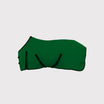 Rugs
Rugs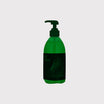 Care
Care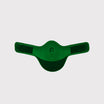 Saddle and Attachments
Saddle and Attachments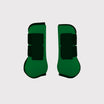 Leg Protection
Leg Protection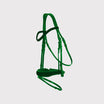 Bridles
Bridles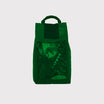 Feed
Feed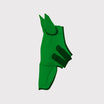 Fly Masks
Fly Masks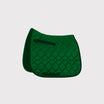 Saddle Pads
Saddle Pads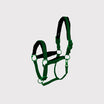 Headcollars and Ropes
Headcollars and Ropes Bits
Bits Other Disciplines
Other Disciplines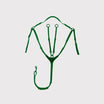 Reins and Auxiliary Reins
Reins and Auxiliary Reins Clipping
Clipping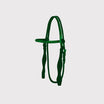 Western
Western Eventing
Eventing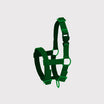 Foals
Foals Reflection
Reflection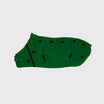 Therapy Products
Therapy Products Boots and Shoes
Boots and Shoes Breeches and Belts
Breeches and Belts Tops
Tops Safety
Safety Competition
Competition Heated Clothing
Heated Clothing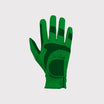 Gloves
Gloves Socks
Socks Spurs and Attachments
Spurs and Attachments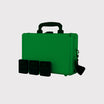 Technology
Technology Whips
Whips Gifts
Gifts Casual Wear
Casual Wear Underwear
Underwear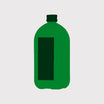 Rider Pharmacy
Rider Pharmacy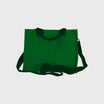 Bags
Bags Books
Books Laundry supplies
Laundry supplies Jewelry
Jewelry Feed and Waterbowls
Feed and Waterbowls Equipment
Equipment Tack Room
Tack Room Pest Control
Pest Control Arena
Arena Horse Toys
Horse Toys Wheelbarrows
Wheelbarrows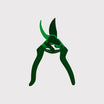 Yard
Yard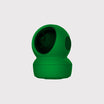 Surveillance
Surveillance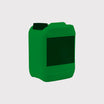 Disinfect
Disinfect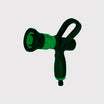 Washing Area
Washing Area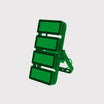 Lighting
Lighting Horse Pasture
Horse Pasture Current Conductors
Current Conductors Pole
Pole Insulators
Insulators Energisers
Energisers Gate Handles
Gate Handles Batteries and Accumulator
Batteries and Accumulator Nets
Nets Grounding
Grounding Tools
Tools Fencing Security
Fencing Security Wolf Defense
Wolf Defense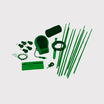 Fencing Sets
Fencing Sets Fence locks
Fence locks Dogs
Dogs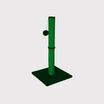 Cats
Cats Rodents
Rodents Dogs Pharmacy
Dogs Pharmacy Cats Pharmacy
Cats Pharmacy Rodents Pharmacy
Rodents Pharmacy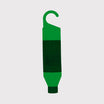 Cattle Pharmacy
Cattle Pharmacy Poultry Pharmacy
Poultry Pharmacy Veterinary Supplies
Veterinary Supplies Cattle
Cattle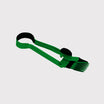 Sheep and Goats
Sheep and Goats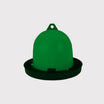 Poultry
Poultry Heat Lamps
Heat Lamps Calves
Calves Marking
Marking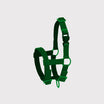 Halters
Halters